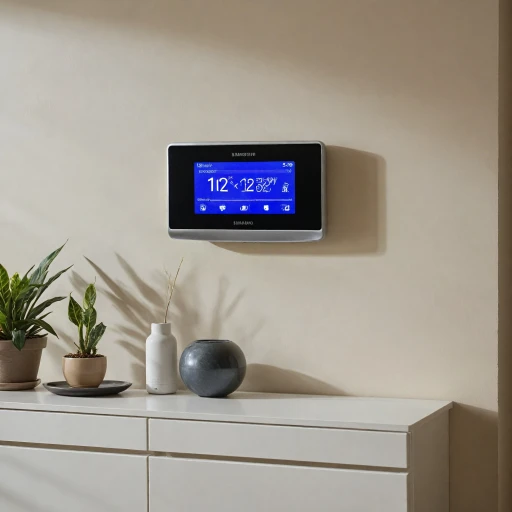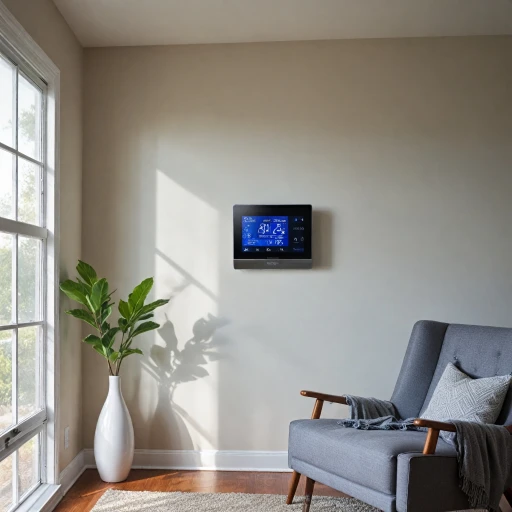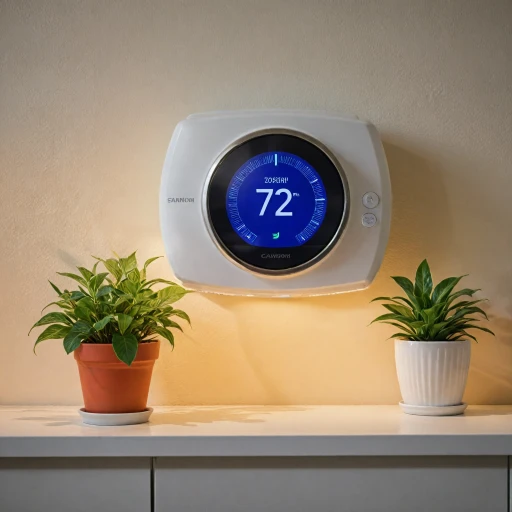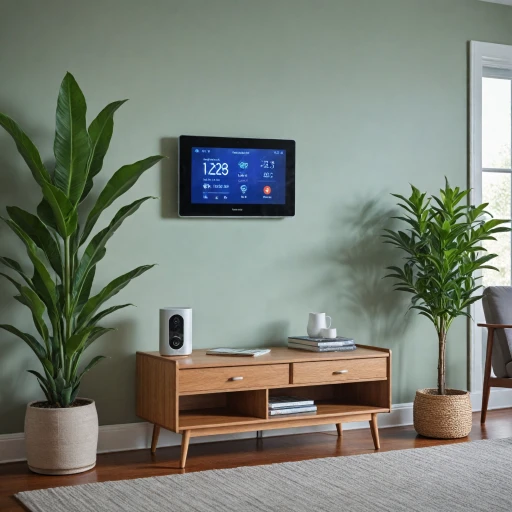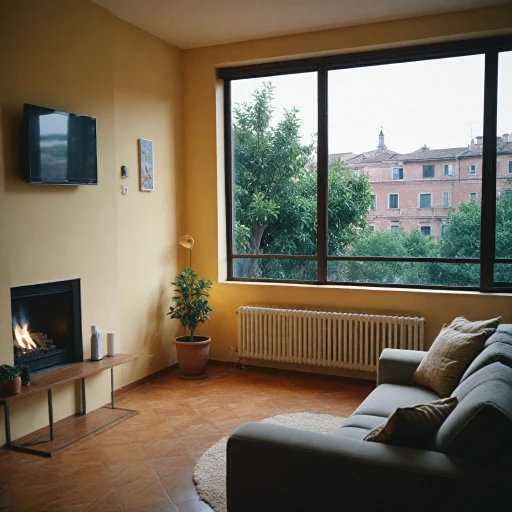What is Automatic Changeover in Smart Thermostats?
Exploring the Feature of Automatic Temperature Regulation
Automatic changeover in smart thermostats is a standout feature designed to enhance convenience and efficiency in monitoring and adjusting your home’s indoor climate. This innovative function allows the thermostat to automatically toggle between heating and cooling modes as needed. This means that the system eliminates the need for users to manually switch settings as outside temperatures fluctuate throughout the year.
In essence, the smart thermostat evaluates the current temperature in relation to your pre-set preferences. It then determines whether your home should be warmed up or cooled down, providing an optimal and comfortable environment for residents. In doing so, it ensures home comfort without requiring you to continually adjust the controls.
A variety of smart thermostats incorporate this useful feature. Popular models, such as those from Honeywell or other Energy Star certified products, often include automatic changeover. Devices like these can integrate with voice assistants like Alexa or Google Assistant, adding more layers of convenience in managing your home’s comfort settings.
However, the complexities don’t end here. Smart thermostat models with programmable settings usually allow users to schedule temperatures based on specific times of the day or week, offering a fully customizable climate solution. If you're curious about maximizing comfort with smart thermostats, even for tailored systems like baseboard heating, consider exploring additional resources for further insights.
How Does Automatic Changeover Enhance Energy Efficiency?
Boosting Efficiency Through Advanced Thermostat Technology
Smart thermostats, such as Honeywell's line of products, have been gaining traction for their ability to improve home energy efficiency. The integration of automatic changeover is one of the noteworthy advancements in this field. But how does this feature specifically enhance energy efficiency? Most smart thermostats, whether it's a high-end product like a Honeywell or an energy-efficient Energy Star rated model, offer the ability to automatically switch between heating and cooling modes as needed. This function optimizes energy use by maintaining targeted temperatures without manual inputs, reducing the likelihood of unnecessary heating or cooling. The ability to seamlessly shift between heat and cool modes ensures that your home stays comfortable throughout fluctuating day temperatures, especially in climates with significant seasonal changes. A programmable thermostat equipped with automatic changeover can output more precise temperature control than a traditional manual control. Devices such as the Honeywell RTH series or those compatible with Alexa and Google Assistant further enhance this efficiency via programmable scheduling and voice command capabilities. The flexibility offered by such smart technology becomes evident, as it works throughout the day to adjust settings based on your preset preferences while considering outside temperature changes. Efficiency also comes from how these thermostats learn over time. Sophisticated algorithms in smart thermostats can analyze your heating and cooling patterns, weather forecasts, and other data to predict and auto-adjust settings accordingly. A model that works well with single-stage or two-stage systems can create optimal conditions with minimal energy waste, leading to reduced heating or cooling bills. When examining costs, while a higher upfront price might be attached to these smart thermostats compared to basic programmable models, the potential savings on energy could outweigh the initial investment. In summary, investing in a smart thermostat with automatic changeover functionality can be a savvy decision for energy-conscious homeowners. To delve deeper into the mechanics behind these savings and smart home integration, check further details and comparisons in resources like Understanding the Benefits of a Two-Stage Thermostat.Improving Home Comfort with Automatic Changeover
Maximizing Home Comfort with Intelligent Temperature Management
Smart thermostats with automatic changeover offer a seamless way to maintain a comfortable home environment, regardless of the season. By automatically switching between heating and cooling modes, these thermostats eliminate the hassle of manual adjustments, providing a level of convenience and comfort that is much appreciated by users. You might be wondering how this functionality directly impacts your daily comfort. The auto changeover feature is attuned to your home's temperature fluctuations, ensuring that the ideal temperature is consistently maintained. This means, whether it's a chilly winter morning or a sweltering summer afternoon, your smart thermostat will efficiently manage the shift between heating and cooling to keep your home at a cozy temperature. Consider the flexibility offered by devices like the Honeywell RTH or other thermostats programmable. These products integrate seamlessly with smart home systems, often compatible with Alexa, Google Assistant, and Amazon platforms. This compatibility means you can manage your thermostat using simple voice commands, which enhances the overall ease of use. Moreover, modern programmable thermostats offer day programmable settings, allowing homeowners to customize their heating and cooling schedules. This personalization not only optimizes comfort but also aligns with your daily routine, ensuring that the temperature is just right when you wake up in the morning or return home from work. For those using single stage or stage systems, programmable thermostats provide an extra layer of control. By accommodating various 'stage' settings, these thermostats ensure that both heat pump and traditional HVAC systems can deliver the precise temperature control needed to enhance home comfort. In the United Kingdom and other regions, the rising adoption of these smart solutions is a testament to their effectiveness in improving home environments. As these devices become more popular, prices have started to reflect the demand for such advanced comfort solutions. While the initial investment may be higher compared to traditional thermostats, the long-term benefits and energy savings make them a worthwhile consideration. For a deeper understanding of how to navigate these advanced systems, particularly for models like Braeburn, you can check out this comprehensive user guide. With energy star ratings and the ability to seamlessly integrate into your smart home ecosystem, these thermostats not only promise comfort but also a significant improvement in energy efficiency, thereby fostering a more eco-friendly lifestyle.Challenges and Considerations with Automatic Changeover
Potential Drawbacks to Consider
When exploring the impressive features of automatic changeover in smart thermostats, it's essential to be aware of some potential challenges and considerations. These factors can impact not only the performance but also the user experience with this innovative technology. Understanding these challenges ensures that you can make a more informed decision when choosing a smart thermostat product, such as the popular Honeywell or other brands available on Amazon.- Compatibility Issues: Not all systems are compatible with automatic changeover. Single-stage and multi-stage systems may have different compatibility requirements, and the thermostat might need specific wiring for the feature to work optimally. Products like the Honeywell RTH may require a 'C' wire for proper functionality.
- Energy Use Concerns: While automatic changeover aims to improve energy efficiency, it can lead to energy wastage if the leeway settings are not properly configured. Ensuring thermostat programmable settings align with your energy-saving goals is crucial, as suggested by the energy star guidelines.
- Setup and Calibration: The initial setup of the thermostat can be daunting. Proper calibration is needed to ensure that the auto changeover functions smoothly between heat and cool settings, providing optimal comfort throughout the year.
- Integration with Smart Home Systems: Compatibility with smart home assistants like Alexa and Google Assistant can vary. Users need to ensure their device can communicate seamlessly with these systems for a truly integrated experience.
- Cost Considerations: While automatic changeover can lead to energy savings over time, the upfront cost can be higher compared to traditional thermostats. Additionally, there can be a price variance among programmable thermostats that offer similar features.
Comparing Smart Thermostats with Automatic Changeover
Making Sense of Different Smart Thermostat Models
When it comes to selecting a programmable thermostat with automatic changeover, understanding the various products available is crucial. With options ranging from basic models to more advanced smart thermostats, each product offers unique features that cater to different needs. Smart thermostats often come equipped with automatic changeover to seamlessly manage your heating and cooling without manual intervention. Models like Honeywell's RTH series and other popular thermostats on Amazon offer different levels of sophistication and connectivity. With compatibility for platforms such as Alexa, Google Assistant, and Amazon Alexa, these devices ensure seamless integration into your smart home setup. Another factor to consider is energy efficiency. As discussed earlier, automatic changeover enhances energy efficiency by maintaining the optimal temperature, reducing energy wastage. Many thermostats like the Energy Star-rated options automatically adjust between heat and cool settings depending on the day's needs, thereby promoting more significant energy savings over time. Some thermostats, such as the Honeywell RTH, offer the flexibility of both day programmable and thermostat programmable settings. These allow users to set schedules based on their daily routines, creating a customized climate control that matches their lifestyle. Features like multi-day scheduling or stage systems help maintain comfort without constant user adjustments. Price is another consideration. While more affordable models may offer basic programmable thermostat functionalities, higher-end smart thermostats come with advances like single-stage or two-stage compatibility, offering finer control over heating and cooling. This can be particularly beneficial for those using a heat pump or complex HVAC systems. Finally, when evaluating different thermostats, be sure to check if they require a specific wire setup or other installation considerations. Some products may need a C-wire (common wire) to enable all their functions, so it's essential to verify compatibility before purchase. By comparing these elements, you can determine which features align best with your needs and make an informed decision for your home climate control system.Tips for Maximizing the Benefits of Automatic Changeover
Boosting the Performance of Your Smart Thermostat
Enhancing your experience with automatic changeover in smart thermostats requires some strategic tips. Here’s how you can amplify efficiency and comfort in your home:- Utilize Programmable Features: Make the most out of the programmable thermostat capabilities. Setting precise schedules tailored to your daily routine ensures your thermostat operates efficiently, leading to reduced energy waste and increased comfort.
- Integrate with Smart Home Devices: If compatible, connect your thermostat with devices such as Alexa or Google Assistant. This integration allows for voice control, providing a seamless way to adjust temperature settings without manual input.
- Regularly Update Device Software: Just like any other smart product, keeping your smart thermostat's software up to date is crucial. These updates often enhance functionality, address security issues, and can even improve automatic changeover features.
- Be Mindful of Sensor Placement: Ensure that sensors, if your model includes them, are placed optimally to accurately gauge the indoor climate. Misplacement can lead to inefficient performance, reducing the benefits of automatic changeover.
- Opt for Models with Enhanced Features: Consider investing in a thermostat that offers advanced energy-saving features. Brands like Honeywell, particularly the Honeywell RTH models, often include robust capabilities for managing heat cool transitions efficiently.
- Evaluate Your Home Configuration: Automatic changeover works best when thermostats are configured according to your home’s heating and cooling systems. Ensure compatibility with single-stage or stage systems, and verify if a common wire is required for optimal functionality.

